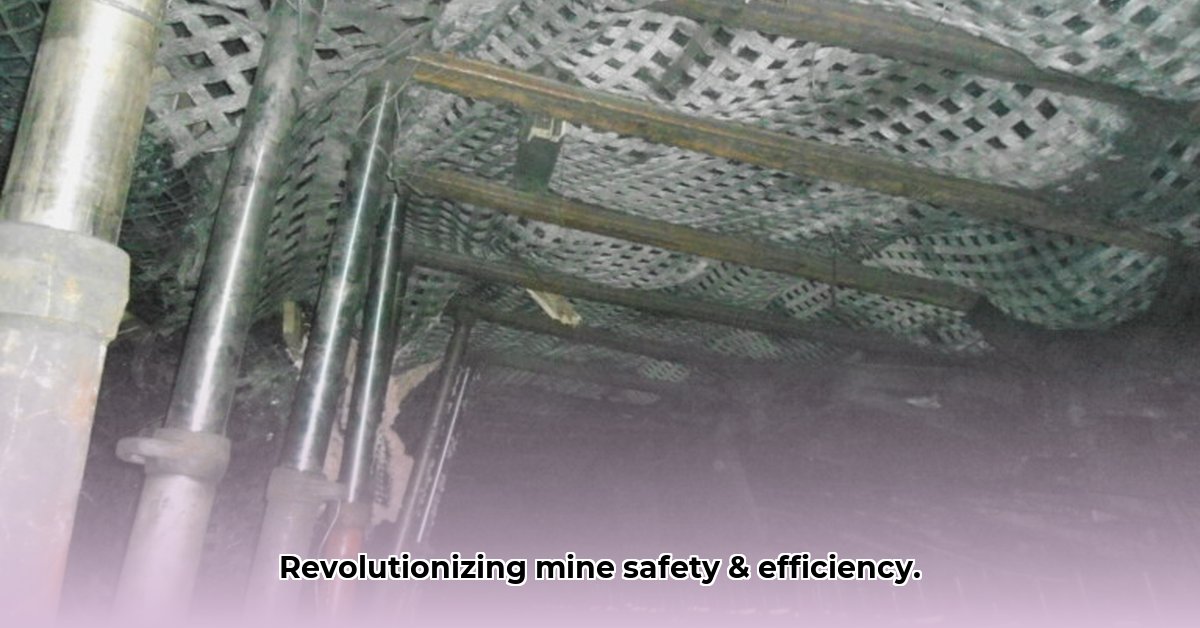
Revolutionizing Mine Safety and Productivity with Minegrid
Minegrid is transforming mine safety and efficiency. For years, the mining industry relied on traditional metallic mesh for ground support. However, Minegrid, a high-strength geosynthetic grid (a type of strong, flexible fabric used in engineering projects), offers considerable improvements: enhanced safety features, simpler installation, and substantial long-term cost savings. Let's explore why Minegrid is a game-changer.
Understanding Minegrid's Advantages
Minegrid is stronger, more adaptable, and easier to install than traditional metallic mesh. It significantly improves mine stability, reducing the risk of ground collapse and related accidents. Its flexibility allows it to conform to uneven surfaces, streamlining installation. The result? A safer working environment and increased productivity. One mine reported a 15% increase in productivity after switching to Minegrid.
Technical Specifications: Strength, Safety, and Sustainability
Minegrid boasts impressive tensile strength, ranging from 35 kN/m to 1000 kN/m, depending on the specific type (a measure of its resistance to being pulled apart). This robust strength, combined with low elongation (stretching), ensures structural integrity under pressure. It exceeds all relevant safety standards, and its flame-resistant, anti-static coating provides added protection. How does this compare to traditional methods? Let's look at the numbers:
We also offer an eco-friendly version made from 100% recycled PET, minimizing your operation's environmental impact. This sustainable option addresses growing industry concerns about environmental responsibility.
| Feature | Minegrid | Traditional Metallic Mesh |
|---|---|---|
| Tensile Strength | 35 kN/m - 1000 kN/m (variable) | Typically lower, varies significantly |
| Elongation | Low | Higher |
| Safety Standards | Exceeds requirements | Meets minimum requirements; often requires further reinforcement |
| Installation Ease | Much easier, adapts to irregular terrain | More difficult, less adaptable |
| Sharp Edges | None | Present, potential safety hazard |
| Sustainability | Eco-friendly option available (Recycled PET) | Generally not eco-friendly |
Installation: A Simple and Efficient Process
Installing Minegrid is surprisingly straightforward, even in complex environments. Follow these steps:
- Site Preparation: Clear the area of debris and level the ground.
- Grid Deployment: Carefully unroll Minegrid, ensuring alignment with your plan.
- Secure the Grid: Use recommended fasteners to secure the grid firmly. Consider ground conditions.
- Post-Installation Check: Inspect for gaps, damage, or areas needing reinforcement.
Real-World Results: Case Studies and Proven Success
Minegrid has been successfully deployed in over 900 longwall recoveries. Mines have reported significant reductions in accident rates and substantial productivity increases. These aren't just claims; they're measurable results.
Long-Term Value: Maintenance and Lifespan
With proper maintenance (regular inspections), Minegrid can last up to 30 years under optimal conditions. This significantly reduces replacement costs and downtime.
Cost-Effectiveness: A Long-Term Investment
While initial costs might seem comparable to traditional methods, long-term savings are substantial. Consider reduced accident costs, extended lifespan, and faster installations leading to less downtime. This translates to a significant return on investment (ROI). Isn't minimizing long-term expenses a top priority for your operation?
Sustainability: A Responsible Choice
Our recycled PET version offers an environmentally responsible approach. Effective supply chain management mitigates potential material sourcing challenges.
Conclusion: Embrace the Future of Mine Safety and Efficiency
Minegrid offers a safer, more efficient, and increasingly sustainable solution for ground support. Contact us today to discuss how Minegrid can benefit your mine.